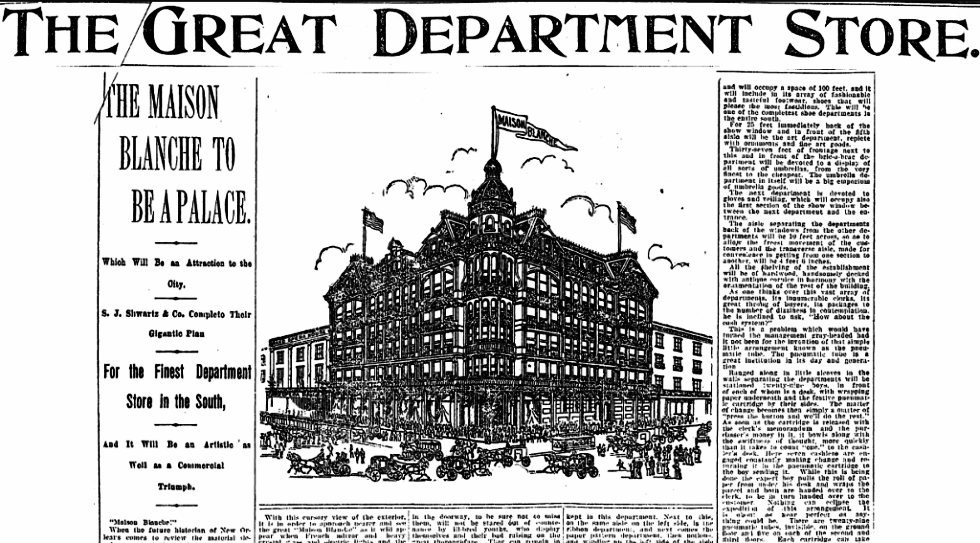|
Today in New Orleans History |
|
|
October 31
Jean Louis Allard Loses the Last of
His Land Almost a century and a half ago Charles Gayarré wrote in his 1867 History of
Louisiana, “On the bank of Bayou, or river St. John, on the land known in our days as Allard's plantation, and
on the very site where now stands the large and airy house which we see [shown here], there was a small village of friendly
Indians. From the bank opposite the village, beginning where at a much later period was to be erected the bridge which spans
the Bayou, a winding path made by the Indians, and subsequently enlarged into Bayou Road by the European settlers, ran through
a thick forest, and connected the Indian village with the French settlement of New Orleans”. Pictured is Julius Robert
Hoening's 1898 painting by titled Plantation and Oak Tree (Allard Plantation). The house fronted Bayou St. John
near Bayou Metairie. The 1910 photo on the following page offers a similar vantage point. The property was used primarily
as a dairy farm. (Photo from the Ogden Museum of Southern Art) Louis Allard was educted
in France and returned home in 1798. On January 19, 1798, at the age of 21, he was appointed syndic
(a Spanish term for a representative) of Bayou St. John by Spanish Governor Gayoso. When the French regained control
of the city, Allard was named to the Municipal Court by Governor Laussat. His duties included inspecting Charity Hospital,
serving on the board of health regulating bakeries, and regulating roads and levees in the district of Metairie, Bayou St.
John, and Gentilly. In 1806, he was a captain in the militia of the Territory of Orleans. Allard was also a state representative
for the Parish of Orleans from 1824-1826 and in 1831-1832. He was anti-Andrew Jackson and anti-John McDonogh. Allard's land evolved to
become one of the largest and oldest public parks in the nation -- New Orleans City Park. Filling 1,300 acres it is 457 acres
it is larger than New York's Central Park. Its age allows for the display of the many architectural styles which came into
vogue during its history – neo-classical, art nouveau, art deco, arts and crafts, mission, and modern Hurricane Katrina caused extensive damage to City Park but the old tomb remained until September, 2011 when the City
Park Improvement Association removed it. A member of the board of directors stated that it was a "hazard".
John Hopper, Chief Development Officer, said that Allard had never been buried there, therefore it was of no historic
value, thus the decision was made to remove all traces of it. The Dueling Oak is still, fortunately, there. From New Orleans City Park (Images of America) by Catherine Campanella.
Elizebeth Smith Friedman, born on August 26, 1892, "America's
first female cryptanalyst" [code breaker]. Her testimony in cases in Galveston, Houston, and New
Orleans in 1933 resulted in convictions against thirty-five bootlegging ringleaders who were found to have violated the
Volstead Act. Ringleaders were directly linked with suspected shipping vessels as a result of the information arising out
of her analysis. She died on October 31, 1980. Related reading: An Encyclopedia of American Women at War [2 volumes]: From the Home Front to the Battlefields Photo of NORD Halloween party at Clay Playground on October 31, 1955. Photo of NORD football player, Bobby Lanasa on October 31, 1955. Photo of NORD Junior Director, Diane Schenck on October 31, 1955.
Charles Willard Moore, born on October 31, 1925, designed the exuberant, postmodern archetype Piazza d'Italia
which was dedicated in 1978. He was also an educator, writer, Fellow of the American Institute of Architects, and winner
of the AIA Gold Medal in 1991. Moore passed away on December 16, 1993.
George T. Ruby was a prominent black Republican leader in Reconstruction-era. In January 1864, he
moved to Louisiana and began teaching school, first in a Baptist church in New Orleans and then, as the Union occupation
force expanded its educational efforts into the hinterland, in St. Bernard's Parish. The army dropped its responsibility
for schooling at the war's end, but the American Missionary Association needed teachers, and Ruby worked for them in New
Orleans, and, when the Freedmen's Bureau schools started up, became a teacher there. In 1866, he went to Jacksboro in East
Feliciana Parish to open a Bureau school there. A white mob attacked him and tried to drive him out. With the return of Democrats
to power in 1874, Ruby went back to Louisiana. He found work on the New Orleans "Louisianian," a black Republican
newspaper edited by Louisiana's former lieutenant-governor, Pinckney B. S. Pinchback. The government provided him with a
job in the New Orleans custom-house, but Ruby's main occupation was newspaper work. He remained on Pinchback's paper until
1878 and then became editor of the New Orleans Observer, a paper of his own through the 1880 election. After its
demise, he began the New Orleans Republic. In the late 1870s, he became a strong supporter of the Exoduster.
movement. Still an influential spokesperson for black interests in Louisiana, he died on October 31, 1882
of malaria at his home on Euterpe Street, New Orleans. (From http://en.wikipedia.org/wiki/George_Ruby) Related reading:
Reconstruction: America's Unfinished Revolution, 1863-1877
Josephine Louise Newcomb, born in Baltimore on October 31, 1816 to Mary Sophia Waters
and Alexander Le Monnier, received her education in Baltimore and in her father's native France. After her mother died,
Le Monnier went to live in New Orleans, where her older sister Eleanor Anne and brother-in-law William Henderson had settled.
There, Le Monnier met Warren Newcomb, and the couple married in Christ Church Cathedral on December 15, 1845. The couple
moved to Louisville, KY, and had a son, Warren, Jr., who died shortly after his birth in 1853. They later moved to New York,
where Josephine gave birth to their second child, Harriott Sophie Newcomb, on July 29, 1855. Harriott Sophie died in
1870 at the age of 15. Through Josephine's philanthropy, H. Sophie Newcomb Memorial College at Tulane University was
established as a memorial to her daughter. Following an initial donation of $100,000, Josephine made gifts totaling
$3 million. She died on April 7, 1901. In December 2005 the Tulane University board of directors announced that
the university would be reorganized on July 1, 2006, to accommodate needed changes due to losses following Hurricane Katrina.
The board also approved the recommendation of a special Tulane Renewal task force to name a revised, co-educational, single
undergraduate college Newcomb-Tulane College. Related reading: Newcomb College, 1886-2006: Higher Education for Women in New Orleans On Saturday, April 30, 1803, the Louisiana Purchase Treaty was signed
by Robert Livingston, James Monroe, and Barbé Marbois in Paris. Jefferson announced the treaty to the American people
on July 4. After the signing of the Louisiana Purchase agreement in 1803, Livingston made this famous statement, "We
have lived long, but this is the noblest work of our whole lives...From this day the United States take their place among
the powers of the first rank." The United States Senate ratified the treaty with a vote of twenty-four to seven
on October 20. The Senators who voted against the treaty were: Simeon Olcott and William Plumer of New Hampshire, William
Wells and Samuel White of Delaware, James Hillhouse and Uriah Tracy of Connecticut, and Timothy Pickering of Massachusetts.
On the following day, the Senate authorized President Jefferson to take possession of the territory and establish a temporary
military government. In legislation enacted on October 31, Congress made temporary provisions for local civil government
to continue as it had under French and Spanish rule and authorized the President to use military forces to maintain order.
Plans were also set forth for several missions to explore and chart the territory, the most famous being the Lewis and Clark
Expedition. France turned New Orleans over on December 20, 1803 at The Cabildo. On March 10, 1804, a formal ceremony
was conducted in St. Louis to transfer ownership of the territory from France to the United States. Effective on October 1,
1804, the purchased territory was organized into the Territory of Orleans (most of which
became the state of Louisiana) and the District of Louisiana, which was temporarily under the control of the governor and
judges of the Indiana Territory.
Maison Blanche Reopens October 31, 1897 Front Page of the Daily Picayune Announces the Redesign/Reopening of Maison
Blanche -- "The Finest Department Store in the South" On October
30, 1897, three "New Orleans boys all under thirty" (according to the Daily Picayune) welcomed all
to the noon opening ceremony of their newly redesigned department store in the ten-year old Mercier Building on the corner
of Canal and Dauphine streets in the 900 block of Canal. The Picayune reported that the "Maison Blanche no
longer resembles its old self". In fact, Simon J. Shwartz, Maison Blanche's general manager, had
already been doing business at this location since 1892. He had formerly worked in his father Abram's fine emporium, A.
Shwartz and Son, which employed some 200 people, in the 700 block of Canal. In 1889 Simon married Clara Newman, daughter
of Isadore Newman, one of New Orleans' wealthiest businessmen
and most generous philanthropists. At that time, Schwartz was a buyer for his father's business, residing in
New York. After a massive fire on February 17, 1892, which destroyed his father's store (and badly damaged D. H. Holmes, Werlein's,
and Kreeger's), Simon opened S. J. Shwartz & Company in the Mercier building. On July 11, 1892 Simon went
into partnership with Gus H. Schulhoefer, continuing to operate under the business name S. J. Shwartz & Company.
Schulhoefer who would manage the second and third floors of Maison Blanche was Isadore Newman's brother-in-law. On July
12, Simon legally withdrew from his father's firm and on Monday, October 17, 1892, S. J. Shwartz & Co. advertised a new
"Grand Opening" in the New Orleans Item. Hart D. Newman, original office and advertising director
of Maison Blanch, was the master of ceremonies at its 1897 grand opening. Newman had previously worked with A. Schwatz &
Son as well as S. J. Schwartz & Co. He was Isadore Newman's son. Many
historical sources tell us that Isodore Newman founded Maison Blanche but in local author Edward J. Branley's word in Maison Blanche Department Stores (Arcadia Publishing), Isidore Newman actually "funded" it. Branley added "One of [Isidore] Newman's best
investments was in his son-in-law's career". The day the store named "Maison Blanche"
opened its doors, a luncheon for the press was followed by a press tour of the building, and finally a general view for the
public in the evening. "The Maison Blanche welcomes thousands", said the Picayune which, in the flowery prose of
the day, elaborately described the 60,580 square feet of selling space,
two passenger elevators at either end of the building, pneumatic tubes which transported currency from each
department to the cashiers' office and flew back with customers' change. Exterior display windows, lit with "electric
bulbs like the lights of a great stage" spanned 125 feet along Canal street and 115 feet on Dauphine -- backed my mirrors
which reflected the merchandise back to window shoppers. On Dauphine Street was a marble step to ease customers' arrival
and departure via carriages. On the corner a tessellated floor, spelling out "S. J. Schwartz & Co." in
mosaic stone reminded one of MB's origin. The store's corner vestibule adorned with white marble and antique oak, was
designed with semi-circular weather doors to keep customers out of the rain when awaiting transportation to and from the store.
It also, according to the Picayune, allowed "ladies who are waiting for relatives or friends at the emporium, and who
wait in the doorway, to be sure not to miss them, will not be stared out of countenance by ill-bred youths, who display themselves
and their bad raising on the great thoroughfare. They can remain in the vestibule secure from the stares. The ground
floor of Maison Blanche was undivided by walls. Mirrored showcases displayed the finest goods. The carpeted second
floor contained the ladies department. The third floor was reserved for upholstery, home goods, and toys. On the fourth
floor was the wholesale department, and the fifth floor was used for stock. Eight white wagons drawn by white horses,
housed along Iberville Street, were at the ready for hourly deliveries. The store occupied 901, 903, 905, 907, 909,
913, 915, and 917 Canal Street as well as numbers 1 through 15 on Dauphine Street. On page one of the Wednesday,
September 1, 1897 Daily Picayune readers saw, "When the future historian of New Orleans comes to review the material
development and trade growth of the year 1897, he will have a lot to say about Maison Blanche, which he will go on to tell
was an extension of the department store idea, not heretofore dared or dreamed of in the south" and "Anything from
a pin or a postage stamp to the finest made dresses that ever decked her Royal Highness, the Queen of Carnival will be on
sale". The Picayune also lauded the proprietors who, despite a resurgence of Yellow Fever (after a four-year lull) which
resulted in businesses suffering from quarantines and locals fleeing the city, optimistically opened the grand new store
which employed 600 people. In 1901 Simon
bought brought Marks Isaacs into the company and Maison Blanche operated under the Shwartz & Isaacs Co. Ltd. Through
the years, Schwartz systematically changed the Mercier Building but always kept the Maison Blanche store open. He first
demolished the back in 1907 and replaced it with a thirteen story tower with five floors of retail space. It was the tallest
building on the French Quarter side of Canal Street. He then demolished the front along Canal Street and moved the entrance
to Iberville Street until the new section was completed. In 1922, after Schulhoefer died, Schwartz and Newman
merged MB into City Stores, Inc., based in Philadelphia which was later under the presidency of Isodare Newman II. In
1925 WSMB radio was founded with its home on the 13th floor and its towers atop the store.
In 1947 Mr. Bingle was created and designed by employee Emile Alline -- puppeteer Edwin "Oscar"
Isentrout gave the little guy life and a voice during the 1950s. 1947 saw brought the first new MB on Gentilly
Road followed by locations in Metairie's Airline Village Shopping Centers and Westside Shopping Center (1950s), Gentilly Woods
(1960s), Clearview (1969), and Lake Forest Plaza, Northshore Square, and Bon Marche in Baton Rouge (1970s). In 1979
City Stores filed for bankruptcy. Maison Blanche was sold to Goudchaux's of Baton Rouge (not Godchaux's of New Orleans).
In 1991 Goudchaux's dropped their name, dubbing the stores "Maison Blanche" again, then changed it to Dillard's.
In the summer of 1998 the Canal Street store closed for good. In 1999 it was sold to Ritz-Carlton. New Orleanians can
now spend the night at the old MB. A little know fact -- there was a Maison Blanche long before this business
opened. On June 10, 1866 Mssrs. Gallot and Chavannes announced the opening of The Maison Blanche on Canal Street and described
it as such in the Picayune, "This is the name of a very beautiful liquor store at 157 Canal Street (next to D.H. Holmes).
The interior decorations of which have been gotten up in the most artistic and elaborate manner is perhaps the finest store
of the kind in this country". They would sell preserved fruits, vegetables, meats, fish, and pate and would open
the store "tomorrow evening". Later advertisements in 1866 touted "fancy food", Havana cigars, a
sample room, and/or a "back saloon". By 1870 it was run by Soloman and Planellas. Ironically, in 1849 a Mr.
Gallot had a dry-goods store at Canal and Dauphine -- the location we know of as the Maison Blanche building. Related
reading: Maison Blanche Department Stores Edward J. Branley |
||
|

To receive an update for each day in New Orleans history,
join our facebook page - Today in New
Orleans History.
Analytics |

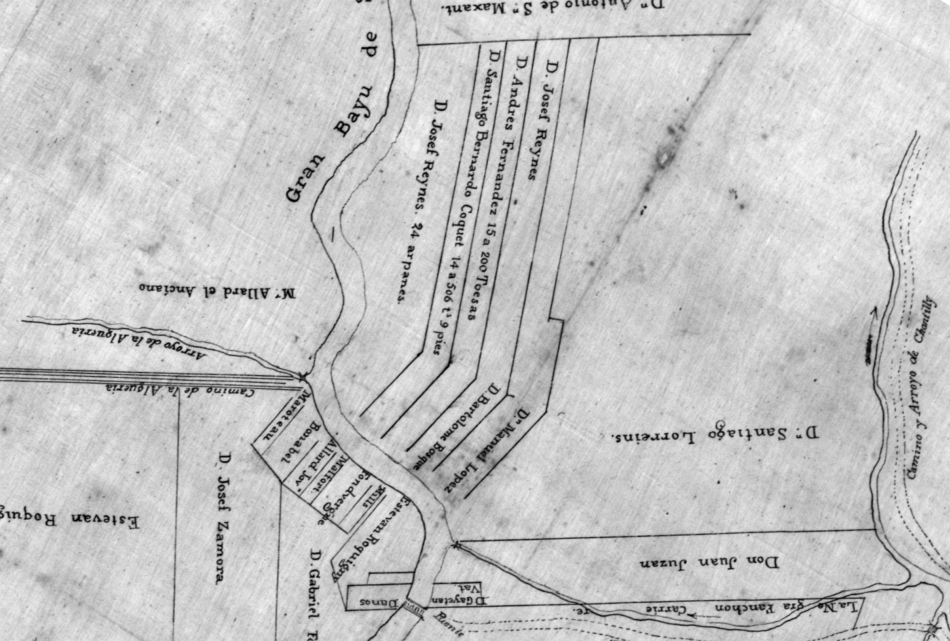
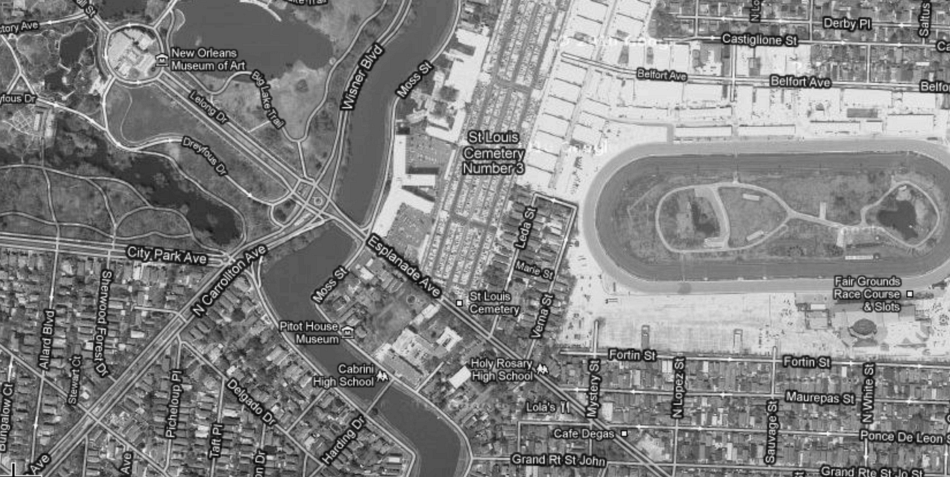
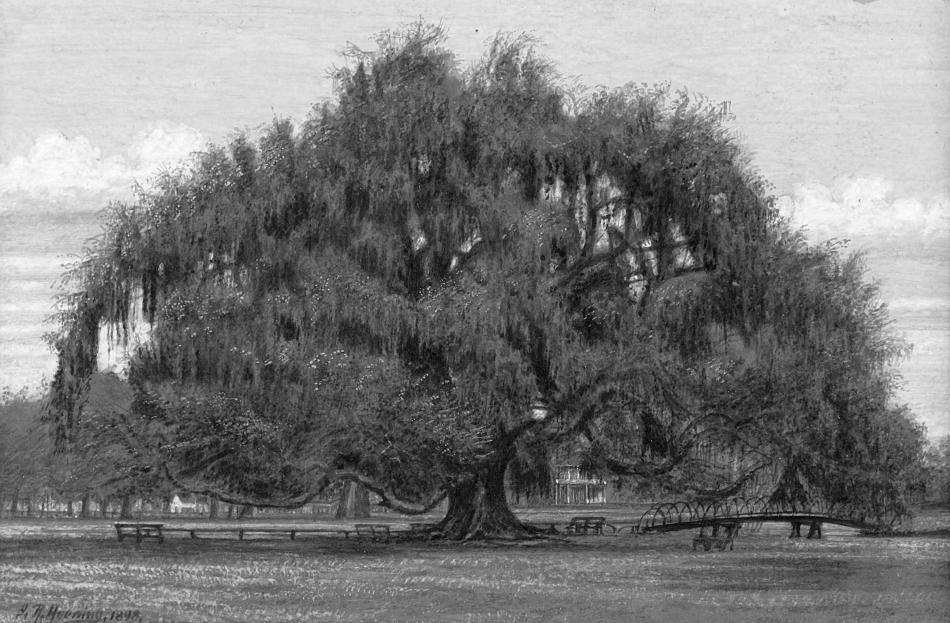
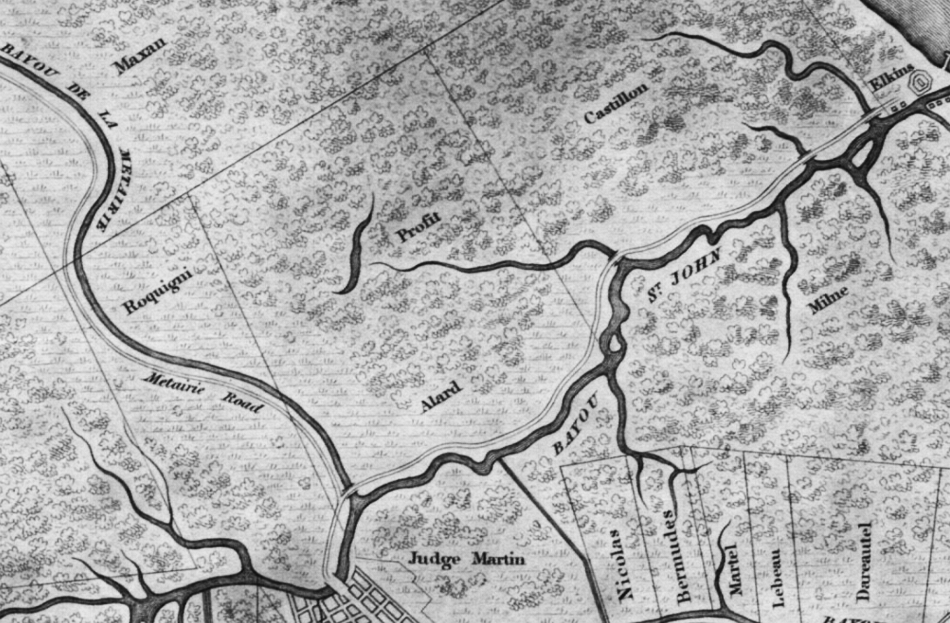
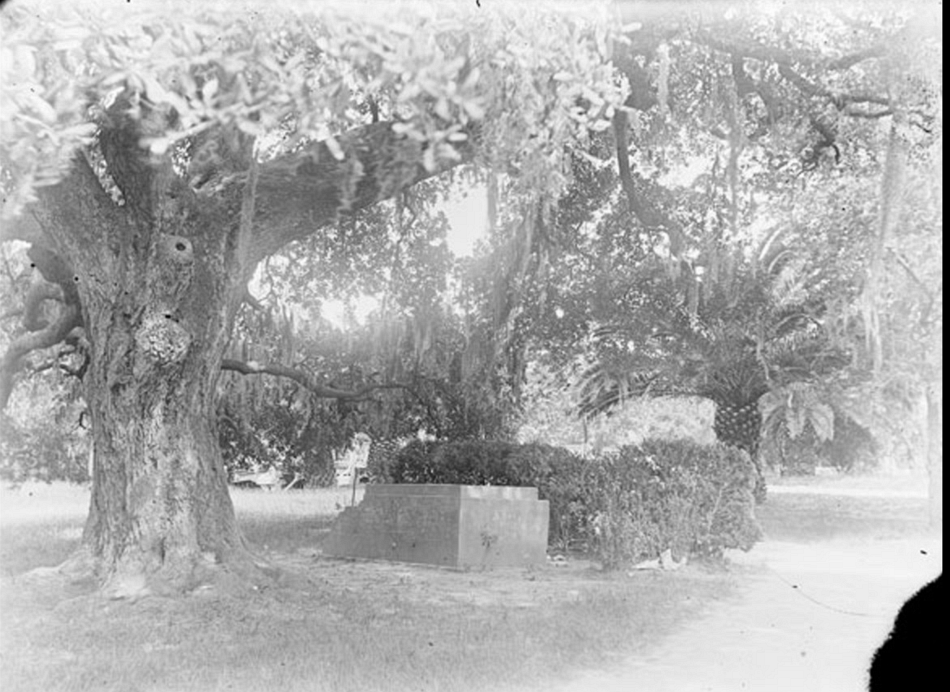

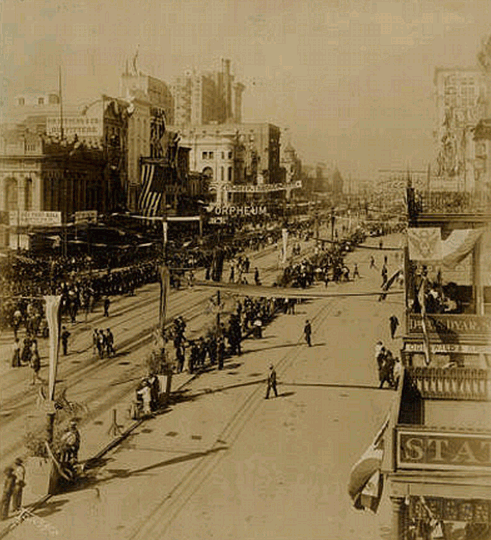
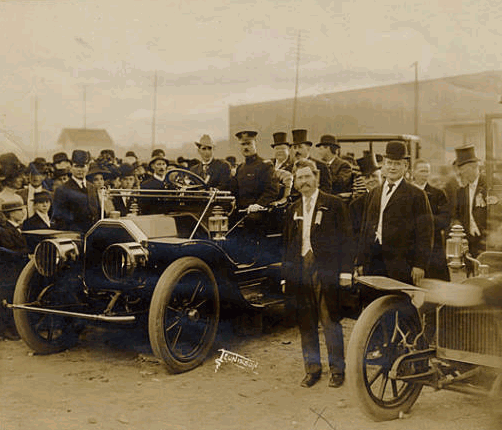 At 2:00 Taft delivered his address to the convention after Phillip Werlein called the meeting to order, Bishop David Sesums
delivered the convocation, and W. K. Kavanaugh, President of the Lakes-to-the-Gulf Deep Waterway Association, presented
his address. An estimated 5,000 delegates and 1,000 of visitors
were in attendance for the duration of the convention. At 4:00 Taft was taken to Pelican Park where he watched the
end of the L.S.U vs. Sewanee game. Then he was off to Tulane for a glimpse of a Mississippi vs. Tulane match.
His entourage then drove down St. Charles Avenue which was lined with people, paused at the Atheneum at St. Charles and Clio
to admire the elaborate decorations put in place for the convention, and on to the hotel where photographer John N. Teunisson
had left an album of photos from Taft's earlier visit (when Taft's "digestive apparatus" had been upset).
At 8 p.m. the president had dinner at the Pickwick Club followed by a reception at the French Opera House where "La Juive"
was presented.
At 2:00 Taft delivered his address to the convention after Phillip Werlein called the meeting to order, Bishop David Sesums
delivered the convocation, and W. K. Kavanaugh, President of the Lakes-to-the-Gulf Deep Waterway Association, presented
his address. An estimated 5,000 delegates and 1,000 of visitors
were in attendance for the duration of the convention. At 4:00 Taft was taken to Pelican Park where he watched the
end of the L.S.U vs. Sewanee game. Then he was off to Tulane for a glimpse of a Mississippi vs. Tulane match.
His entourage then drove down St. Charles Avenue which was lined with people, paused at the Atheneum at St. Charles and Clio
to admire the elaborate decorations put in place for the convention, and on to the hotel where photographer John N. Teunisson
had left an album of photos from Taft's earlier visit (when Taft's "digestive apparatus" had been upset).
At 8 p.m. the president had dinner at the Pickwick Club followed by a reception at the French Opera House where "La Juive"
was presented.